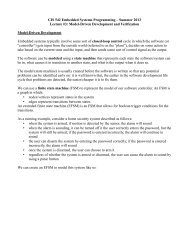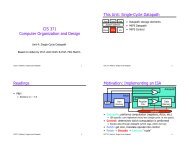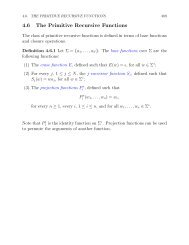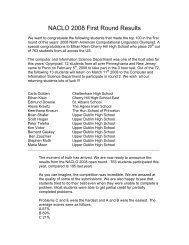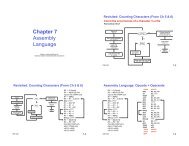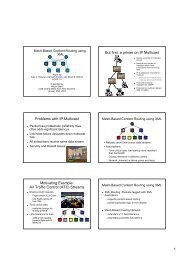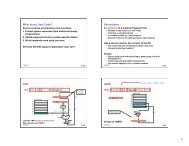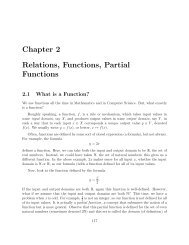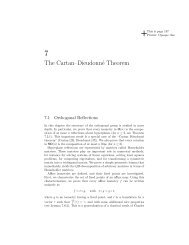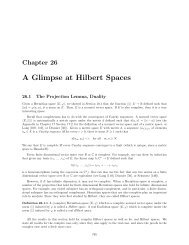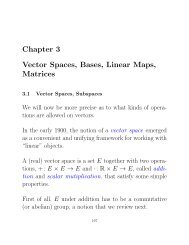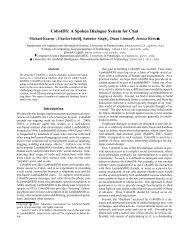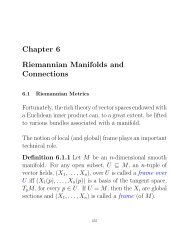Chapter 3 Context-Free Grammars, Context-Free Languages, Parse ...
Chapter 3 Context-Free Grammars, Context-Free Languages, Parse ...
Chapter 3 Context-Free Grammars, Context-Free Languages, Parse ...
Create successful ePaper yourself
Turn your PDF publications into a flip-book with our unique Google optimized e-Paper software.
48 CHAPTER 3. CONTEXT-FREE GRAMMARS AND LANGUAGES<br />
Lemma 3.4.2 A language L is regular if and only if it is generated by some right-linear<br />
grammar.<br />
Proof . Let L = L(D) for some DFA D =(Q, Σ,δ,q0,F). We construct a right-linear<br />
grammar G as follows. Let V = Q ∪ Σ, S = q0, andletP be defined as follows:<br />
P = {p → aq | q = δ(p, a), p,q∈ Q, a ∈ Σ}∪{p → ɛ | p ∈ F }.<br />
It is easily shown by induction on the length of w that<br />
and thus, L(D) =L(G).<br />
p ∗<br />
=⇒ wq iff q = δ ∗ (p, w),<br />
Conversely, let G =(V,Σ,P,S) be a right-linear grammar. First, let G =(V ′ , Σ,P ′ ,S)be<br />
the right-linear grammar obtained from G by adding the new nonterminal E to N, replacing<br />
every rule in P of the form A → a where a ∈ ΣbytheruleA → aE, and adding the<br />
rule E → ɛ. It is immediately verified that L(G ′ )=L(G). Next, we construct the NFA<br />
M =(Q, Σ,δ,q0,F) as follows: Q = N ′ = N ∪{E}, q0 = S, F = {A ∈ N ′ | A → ɛ}, and<br />
δ(A, a) ={B ∈ N ′ | A → aB ∈ P ′ },<br />
for all A ∈ N and all a ∈ Σ. It is easily shown by induction on the length of w that<br />
and thus, L(M) =L(G ′ )=L(G).<br />
A ∗<br />
=⇒ wB iff B ∈ δ ∗ (A, w),<br />
A similar lemma holds for left-linear grammars. It is also easily shown that the regular<br />
languages are exactly the languages generated by context-free grammars whose rules are of<br />
the form<br />
where A, B ∈ N, andu ∈ Σ ∗ .<br />
A → Bu,<br />
A → u,<br />
3.5 Useless Productions in <strong>Context</strong>-<strong>Free</strong> <strong>Grammars</strong><br />
Given a context-free grammar G =(V,Σ,P,S), it may contain rules that are useless for<br />
a number of reasons. For example, consider the grammar G3 =({E, A, a, b}, {a, b},P,E),<br />
where P is the set of rules<br />
E −→ aEb,<br />
E −→ ab,<br />
E −→ A,<br />
A −→ bAa.



